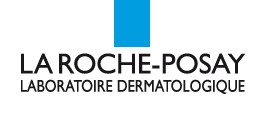During flare-ups or acute inflammatory periods it is best to seek medical advice. Dermatologists and General Practitioners will prescribe an individual treatment programme which usually consists of a short term topical steroid and anti inflammatory cream based on GP’s and dermatologists assessment of the patient.
If used correctly, the topical steroids prescribed by a doctor are very effective in treating eczema and controlling the distressing symptoms.
Unfortunately, many people, particularly parents, worry about side effects and either under-use or decide against the use of steroids. This means their children’s eczema is not properly controlled.
The most common side effect is skin thinning when the skin gets papery and wrinkly, but this is very rare and should not happen if steroids are used properly.
Topical steroids (also known as corticosteroids) have been the main treatment for eczema for 50 years. They help to reduce skin inflammation by reducing the reactions which happen in the skin with eczema.
They come in four strengths in Ireland
- Mild (weak)
- Moderately potent (moderately strong)
- Potent (strong)
- Very potent (very strong)
Most steroids come in cream and ointment formulations. Ointments are generally better as they are greasier and contain fewer preservatives than creams. Many children are prescribed two different strengths of topical steroid: a weaker one for face and neck eczema and a stronger one for body eczema.
Steroids are usually to be applied once or twice daily and only to active eczema (reddened, thickened and open areas but not to cuts or grazes). After applying steroids, its best to advise to leave a 20-30 minute gap before applying moisturiser as applying it at the same time dilutes or weakens the effect of the steroid.
Some dermatologists suggest you use the ‘fingertip’ method to apply steroids. One fingertip unit is about 0.5g – about the amount you can get on an adult fingertip. But it is best to simply advise to apply a thin layer of steroid (just enough to make the skin shiny) to areas of active eczema. If there is eczema, it should be treated but a topical steroid should not be used unless there is active eczema.
These steroid creams are prescription drugs and are essential during flare-ups. However the use of these steroid creams between acute inflammatory episodes is recommended in the management of eczema to diminish risk of further flare-ups. By applying a daily emollient recommended by a dermatologist (emollients specifically adapted for children with atopic and sensitive skin), the protective barrier of the emollients prevent the passage of potential irritant and allergens thus preventing recurrences of flare-up.
 Healthy skin cells contain lots of water but children with eczema have skin which makes fewer fats and oils that act as a cement between cells. This means the skin cells dry out and shrink, and more water can be lost through the gaps in the skin barrier.
Healthy skin cells contain lots of water but children with eczema have skin which makes fewer fats and oils that act as a cement between cells. This means the skin cells dry out and shrink, and more water can be lost through the gaps in the skin barrier.
Click here to learn how to keep flare-ups at bay
This article is brought to you by the skin experts from La Roche-Posay.








